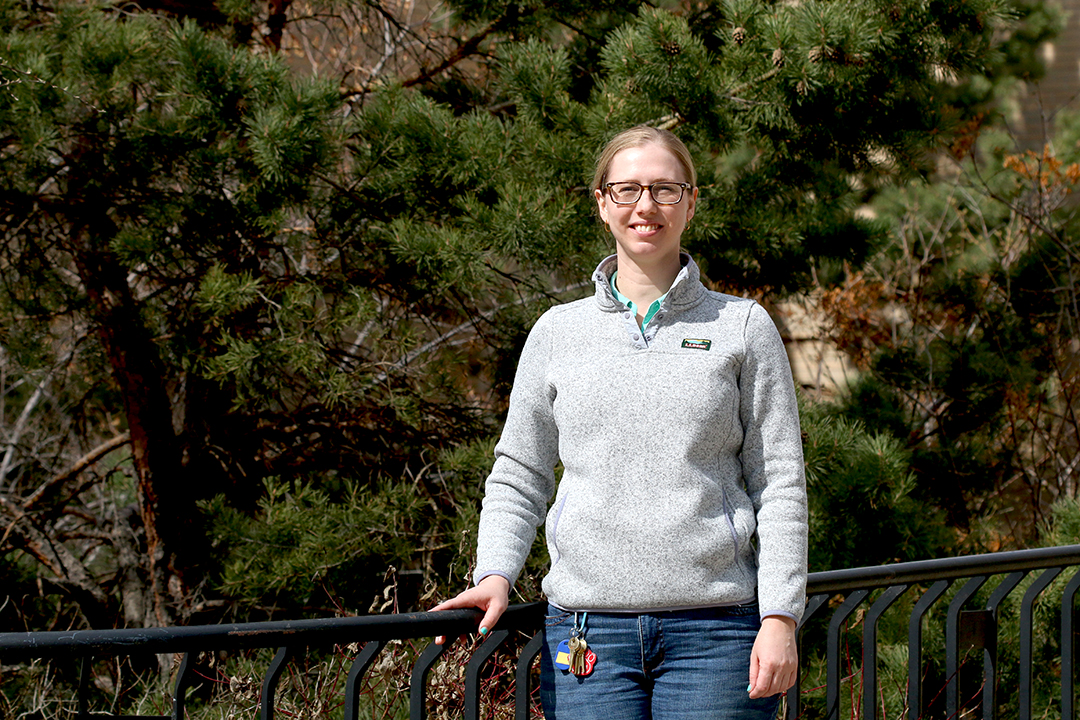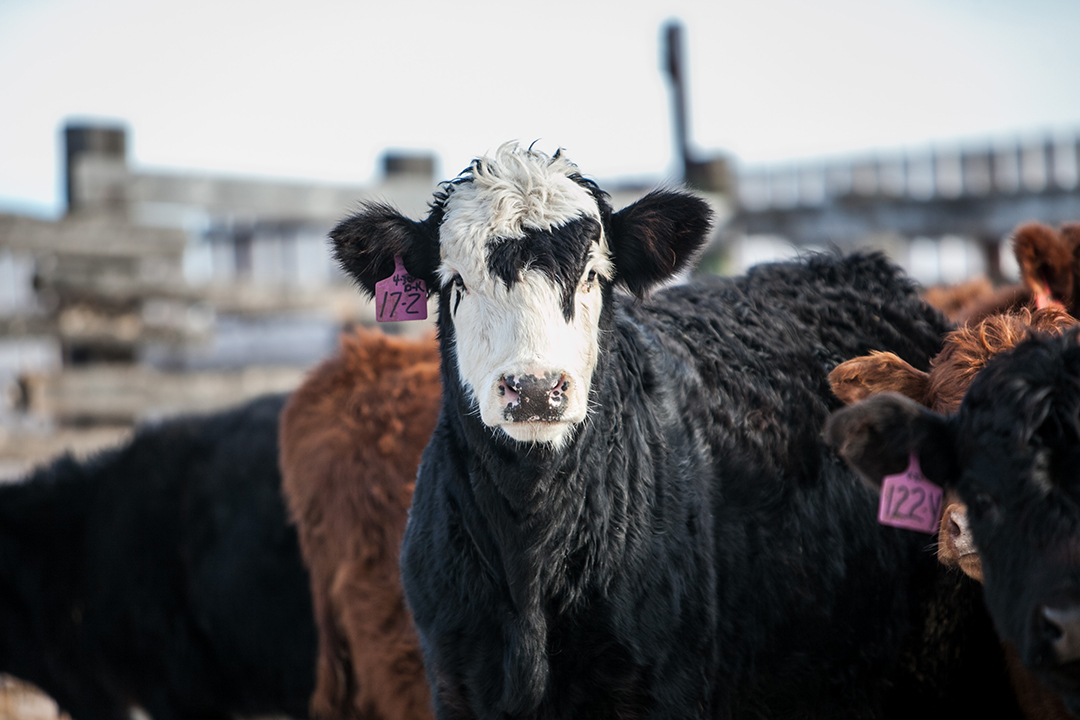
Genome sequencing key to beef cattle specialist's antimicrobial research
Beef cattle specialist Dr. Emily Snyder is applying her expertise to address antimicrobial resistance — one of the most pervasive health issues affecting background and stocker operations in the beef cattle industry.
By Nykole KingSnyder joined the Department of Large Animal Clinical Sciences at the Western College of Veterinary Medicine (WCVM) as a beef cattle veterinary specialist in January 2021. By using genome sequencing, she’s trying to understand the role that emerging strains of antimicrobial-resistant bacteria have in reducing the effectiveness of antimicrobials used in production medicine.
Sequencing of microbial genomes allows researchers to “specifically see the reason that the particular drug we’re using isn’t working anymore … because this bacterium has got a gene from microbial resistance,” says Snyder.
“I think it’s interesting that we can see the impacts of something that seems so small [and] can have a real-world impact on animals.”
Snyder’s research on bovine respiratory disease could save producers considerable time and money by understanding when to provide production medicine, and how to minimize contagious spread of pathogens among a herd.
“It’s important that we understand how we may or may not be selecting for antimicrobial resistance in beef medicine and production,” Snyder says. “Whether that be reducing antimicrobial use or looking at when we give animals microbials (antibiotic drugs) so that we’re not giving it at times when we might be more likely to select for resistant pathogens.”
Bovine respiratory disease (BRD) isn’t specific to any particular breed of cattle, but it’s seen more frequently in calves after they have been weaned at background and stocker operations. Antimicrobial resistance has also been identified in cattle during their first few weeks and months in feedlots.
Some Canadian cattle are purchased by background or stocker operations that focus on feeding beef calves to maturity on forage — maximizing growth of muscle and bone. Finishing operations aim to increase body weight and value of beef cattle before slaughter. In Western Canada, most calves go directly to feedlots that perform both functions.

Although agriculture is a key industry in her home state of Iowa, Snyder had her first real interaction with livestock as a Future Farmers of America (FFA) member in high school. She began competing in livestock judging competitions — something she continued to during college.
This early exposure to livestock sparked Snyder’s keen interest in animal health, particularly beef cattle, which she pursued at Iowa State University. She completed a Bachelor of Science degree in animal science in 2007, followed by a Doctor of Veterinary Medicine (DVM) program in 2011.
Snyder practised as a veterinarian for a few years but knew she wanted to return to research. At the University of Georgia, she finished a Master of Food Animal Medicine degree in 2016 as well as a PhD degree in 2020. For her graduate research, she focused on Mannheimia haemolytica, the bacterium most frequently isolated from the lungs of cattle with BRD and a disease of concern for Georgia’s stocker operations.
While it’s still early in the process of establishing research collaborations, Snyder has started discussions with her new USask colleagues — including WCVM professor Dr. Cheryl Waldner.
“We are very fortunate to have an emerging researcher of her calibre focused on addressing issues that have been highlighted as critical for animal health and sustainability by the Canadian beef industry,” says Waldner, who also holds the NSERC/BCRC Industry Research Chair in One Health and Production-Limiting Diseases at the college.
Waldner’s five-year research program is supported by the Natural Sciences and Engineering Research Council of Canada (NSERC) and the Beef Cattle Research Council (BCRC).
In her role as research chair, Waldner’s primary goals are to give cattle producers and veterinarians the information and tools they need to manage emerging health and sustainability challenges, to strengthen surveillance in the beef industry and to identify practices for improving animal health and welfare.
Waldner adds that Snyder’s experience in genome sequencing for the selection of antimicrobial resistance is a “strong complement” to the WCVM’s existing research focus.
“Her experience with antimicrobial resistance, respiratory bacteria and in applying emerging genomics technologies will immediately allow us to add to our opportunities to understand the spread of bovine respiratory disease and expand the benefits to industry generated by the samples and data collected in our recent projects.”
Snyder says the quality of research team members and opportunities for research collaborations drew her to USask and Saskatoon. Saskatchewan’s thriving cattle industry and the university’s Livestock and Forage Centre of Excellence (LFCE) were also factors in her decision.
While Snyder’s teaching program is still under development, she aims to bring her background in beef medicine to help with ongoing courses at the college. She and her colleague, Dr. Nathan Erickson, are also discussing the option of team-teaching a course focused on the beef cattle industry.
As far as her research plans, Snyder is gathering preliminary data based on nasal swabs and frozen isolates that have already been collected. Further on in her research, she hopes to collect nasal swabs from live animals and to conduct environmental sampling.
For Snyder, sharing her results with her colleagues, industry partners and livestock producers is what she especially enjoys.
“I love presenting to other people so we can discuss what it might mean, what impacts it has on them — that’s what I love the most.”
